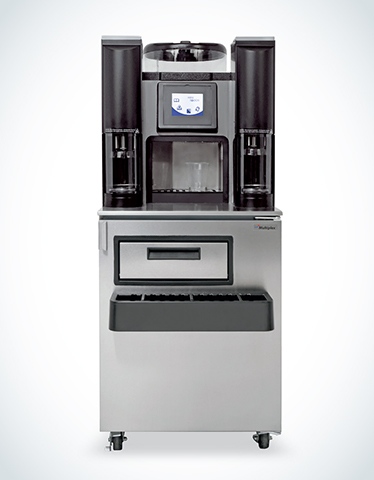
Love cooking? Does the latest and newest appliance catch your eye often and the kitchen star ts becoming a home for these gadgets? Of course it is true that some machines are just built for a single purpose but many of us do tend to own too many kitchen products. Perhaps it isn’t too much of a lament for home cooks but it is definitely one for restaurant operators. According to Welbilt’s Rick Caron, most of their clients say they have “too much equipment!”. Naturally, it takes up space and many times they are left idling, resulting in a waste of cost and indirectly, the energy used to build the equipment. Coming from the corporation running various brands and items, Welbilt found that it was not as easy as simply putting different equipment in a space together and making it work. The solution the corporation proposes now is to break down categories where possible and integrate functions of equipment.

Some of his suggestions for equipment selection include:
• Using the best appliance although not necessarily the most expensive or fanciest. It is important to really understand equipment design and what it means to your kitchen.
• How equipment matches staff usability.At times equipment with overly complex manuals or is higher powered than needed might cause staff to avoid using it. For example; the height or length – stacking ovens might save space but if it is too difficult to reach, the top oven will rarely get used but you might still need to heat the empty space when employees only use the bottom shelves.
• Consider integrated appliances because you don’t have enough room and it also doubles up for better energy efficiency. Rick Caron cites the example of combination ovens that infuses steam and convection modes for various cooking capabilities. In the example of Convotherm 4 combisteamer, just a small unit can free up or replace 40 to 50% of all standard cooking appliances, which means less energy is flowing out of the kitchen. The speed it cooks and ability to handle bigger volumes helps operators reduce energy by up to 28% compared to conventional cooking methods.
 Or accelerated cooking technologies where compact ovens can cook using a wide range of methods simply by feeding data into the system. These units do not need ventilation hoods, further saving energy and space in the working area. In the case of Merrychef; it combines three heat technologies which are convection, microwave and impingement to bake, toast, fr y, grill in one unit.
Or accelerated cooking technologies where compact ovens can cook using a wide range of methods simply by feeding data into the system. These units do not need ventilation hoods, further saving energy and space in the working area. In the case of Merrychef; it combines three heat technologies which are convection, microwave and impingement to bake, toast, fr y, grill in one unit.
Another example given by Rick Caron is blenders combining an ice machine, an undercounter refrigerator and a blending station that blends the drink directly in the cup. Automated features are designed to save product costs, cut down on waste and labour; all which are also contributor y to energy efficiency. To conserve energy from washing externally, a built-in rinse cycle is automatically activated after the operator is done preparing the drink and re-closes the door.

• Surely you are planning for the business to go a long way. A long-term investment in equipment that might cost more initially will eventually pay itself off when it consistently provides results in food quality, energy savings and is able to withstand heavy usage
• Aside integrated equipment, there are machines that cannot be integrated such as refrigeration. As these have to run 24/7; you would do well to pick one that has documented figures that show energy savings. The new Electrolux ecostoreHP refrigerated counters come with a combination of both the highest climate class 5 and highest energy efficiency A rating on the market, with the latter being able to give you energy savings of up to 480 €/year ensuring a fast return on your investment.

• Benchmarking – pick a work station or the whole kitchen if you like. For example, you may want to measure the energy use during peak period on day 1 and day 2. What are the variables that contribute to a reasonable use of energy and how can they be prioritised for better performance? When you have decided the steps to carry out the benchmarking exercise, you also need to implement measuring because if you cannot measure and verify, you can’t control the kitchen.
• Instead of the conventional way of patrolling and taking notes, modern technology has provided operators with automated devices such as timers, sensors and switches that you can pre-set to turn on, be on standby or shut down at regulated intervals.
• There are also metering devices that will provide you with a report of energy use of equipment, enabling you to work on improving energy management and reinvest savings. Flip to the next page to find out more about independent solutions for measuring energy use and enables you to carry out benchmarking for a moreenergy efficient kitchen.
References:
• https://www.rational-online.com/en_gb/products/selfcookingcenter/costeffectiveness/page_normal_12.php
• www.merrychef.com
• www.manitowocbeverage.com
• http://professional.electrolux.com/
• Weltbilt Inc – Kitchen Design & Foodservice: 5 Ways to Improve Foodservice Operations










